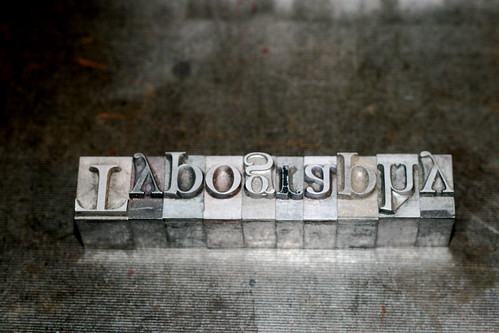
For almost ten years now, there’s been growing anxiety in the writing community about the “publishing crunch.” Essentially, what’s happened is this: publishers find themselves in increasing financial peril; they need to make money, so they try to make safe bets.
The result for readers is a “narrowing of the breadth and depth and diversity of our culture: the quieting of all but the blandest voices, the elimination of all but the safest choices.” The result for writers is that every year it gets harder to publish. Bestsellers reign supreme, and midlist (or mid-career) authors have been shunted down the pecking order, taking the place that beginning writers used to occupy. As small presses (the home of many first-time authors) die in huge numbers, first-time authors may find themselves out in the cold.
It’s a kind of death of the middle class, but within the microcosm of our industry.
There are many reasons for the crunch: the publishing industry’s antiquated returns systems, the growth of the big-box store and mega-distributor, the rise of e-books and internet retailers, and the influence of ever-larger publishing giants.
A writer calling herself Jane Austen Doe, described the crunch for Salon.com in 2004:
In the 10 years since I signed my first book contract, the publishing industry has changed in ways that are devastating — emotionally, financially, professionally, spiritually, and creatively — to midlist authors like me. You’ve read about it in your morning paper: Once-genteel “houses” gobbled up by slavering conglomerates; independent bookstores cannibalized by chain and online retailers; book sales sinking as the number of TV channels soars. What once was about literature is now about return on investment. What once was hand-sold one by one by well-read, book-loving booksellers now moves by the pallet-load at Wal-Mart and Borders — or doesn’t move at all.
So what is a junior or mid-career writer to do? Perhaps you’re not ready to jump into self-publishing (and I think there are many reasons not to), yet find yourself agentless and therefore shut out of the above-mentioned conglomerate publishing world? Perhaps you don’t want to write about vampires or celebrities or weight loss. Well, there’s one corner of the publishing world that remains a meritocracy (that is, publishing decisions are made largely based on the literary value of a work) and where good writing can still find a home. This is the world of the university press.
University presses publish a large number of books that would never see the light of day otherwise. These presses and the texts they disseminate are important for our culture, our memory, and for the way that future generations will regard us.
Contrary to popular belief, university presses don’t only publish dry treatises and technical works. In fact, a huge number of university presses publish non-scholarly texts. Many publish creative nonfiction, memoir, poetry, fiction, and even children’s and Y/A literature. Most publish regional fiction — the University of Nebraska Press has a series about the American West; Indiana UP about Indiana; Queens-McGill UP about Canada.
When I was looking for a home for my first book, Silence is Death — it’s a hybrid text (part memoir, part literary analysis, part biography) — I submitted proposals to 13 university presses. 12 said no thanks, but the University of Nebraska press asked to see more. Nebraska is a major publisher of creative nonfiction and memoir, as well as colonial French history, so we seemed a good fit for one another. I ended up publishing the book with them, and my editor at the press made it clear that she was interested in anything else I wrote.
Now, to a writer, there’s nothing quite as valuable as having a champion for your work.
While struggling to finish my second book, I had coffee with my U Nebraska editor who had been so supportive of me the first time around. I was feeling frustrated. My book had stalled while I was trying to force it into a form that seemed more mainstream to me, but it hadn’t worked. Finally, I’d given in and started once again to write from my gut. I was having fun, but the book seemed weird, and this worried me.
“I wanted to write a straight book this time around,” I confessed.
My editor laughed and shook her head. “Why would you want to do that, when you can do what you do?”
I went home with renewed energy and confidence and finished the book.
Long story short: the manuscript sailed through peer review at the University of Nebraska Press (if you don’t know this works, see my earlier post here), and here I am, many months later, waiting for the birth of my second book, Epistolophilia.
University presses will not be an appropriate match for every writer. If you write genre fiction, for example, it won’t be a good fit. But, if your stuff is smart (calm down, I’m not saying that genre writers and writing aren’t smart, just that these are not what university presses publish!), researched, and literary, you may find a home there, and you will find yourself in good company. (My own press, for example, publishes a former US poet laureate and two Nobel Prize winners.)
When submitting to a university press, you generally don’t need an agent. Go to their website and read their submission guidelines carefully, then follow them to the letter. At the proposal stage, send out as many queries as you want (but always according to each press’s individual guidelines). Once a press has solicited your MS (that is, they ask to see the entire book), the accepted etiquette is to send the entire book to only one press at a time.
Here’s a list of university presses that publish in areas other than strict scholarship:
[Photo: RellyAB]
This post is part of a weekly series called “Countdown to Publication” on SheWrites.com, the premier social network for women writers.




